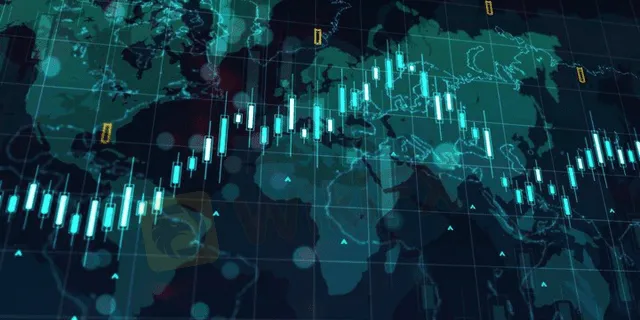As a novice forex trader, I often found myself overwhelmed by the deluge of data and technical indicators. Amidst the labyrinth of charts and graphs, one simple yet effective tool stood out: the moving average.

Image: litefinance.com.ng
The moving average (MA), a technical analysis tool, has played a pivotal role in my trading journey. It has simplified my decision-making process, providing valuable insights into market trends and potential trading opportunities. In this article, we will delve into the world of moving averages, exploring their types, benefits, and applications in the forex market.
What is a Moving Average?
A moving average is a technical indicator that calculates the average price of a security over a specified number of periods. This average price is constantly recalculated as new data becomes available, providing a smoother representation of the price trend compared to the raw price data.
By eliminating short-term fluctuations and highlighting the underlying trend, moving averages help traders identify potential trading opportunities, assess the strength and direction of a trend, and set stop-loss and take-profit levels.
Types of Moving Averages
There are several types of moving averages, each with its own unique characteristics:
- Simple Moving Average (SMA): The SMA is calculated by simply averaging the prices over a specified number of periods. It is the simplest type of moving average and is commonly used for smoothing out price data.
- Exponential Moving Average (EMA): The EMA places more weight on recent prices compared to older prices. It reacts more quickly to price changes than the SMA, making it more sensitive to market movements.
- Smoothed Moving Average (SMMA): The SMMA takes a more balanced approach, combining the simplicity of the SMA with the responsiveness of the EMA. It is calculated by smoothing the EMA over a second period.
- Volume-Weighted Moving Average (VWMA): The VWMA takes into account the volume of trades at each price point. It provides a volume-based average price, which can be helpful in identifying areas of supply and demand.
Benefits of Using Moving Averages
Moving averages offer several advantages for forex traders:
- Trend Identification: Moving averages help traders identify long-term and short-term market trends. By analyzing the slope and direction of the MA line, traders can determine the overall momentum of the market.
- Confirmation: Moving averages can provide confirmation for trading decisions. When price crosses above or below a MA line, it can indicate a change in trend or a potential trading opportunity.
- Stop-Loss and Take-Profit Levels: Moving averages can assist traders in setting appropriate stop-loss and take-profit levels. By placing these levels near MA lines, traders can protect their profits and minimize potential losses.
- Support and Resistance Levels: Moving averages can act as dynamic support and resistance levels. When price reaches a MA line, it may encounter temporary resistance or support, which can indicate potential reversal points.

Image: www.wikifx.com
Expert Tips for Using Moving Averages
To maximize the effectiveness of moving averages, consider these expert tips:
- Choose the Right Period: The period of the MA should be aligned with your trading style. Shorter-period MAs provide more sensitive signals but are prone to false breakouts. Longer-period MAs provide smoother signals but may lag behind market movements.
- Combine Multiple MAs: Using multiple MAs with different periods can provide a more comprehensive view of market trends. For example, a 50-period SMA can indicate long-term trends, while a 20-period EMA can highlight shorter-term fluctuations.
- Smooth Out Signals: By using smoothed MAs, such as the SMMA or VWMA, traders can reduce false signals and improve the reliability of their trading decisions.
- Beware of Over Fitting: While moving averages are powerful tools, it is important to avoid over fitting them to historical data. This can lead to excessive signals and decreased profitability.
FAQ on Moving Averages
Here are some frequently asked questions about moving averages:
- Q: What is the best type of moving average?
A: The best type of MA depends on your trading style and the characteristics of the market. The SMA is simple and reliable, while the EMA is more responsive. The SMMA and VWMA provide a balance of these qualities.
- Q: How many moving averages should I use?
A: The number of MAs used depends on your trading preferences. However, combining two or three MAs with different periods can provide a more comprehensive view of market trends.
- Q: Can moving averages be used for all markets?
A: Moving averages can be applied to any financial market, including forex, stocks, and commodities. They are particularly useful for identifying trends and confirming trading decisions.
Moving Average In Forex Market
Conclusion
Moving averages are a valuable tool for forex traders, providing insights into market trends and potential trading opportunities. By understanding the types and benefits of MAs and implementing expert advice, traders can enhance their decision-making process and improve their trading performance. Whether you are a beginner or an experienced trader, moving averages can play a crucial role in helping you navigate the ever-evolving world of forex trading.
If you are interested in learning more about moving averages and other technical analysis tools, I encourage you to explore our website’s extensive library of educational resources.






